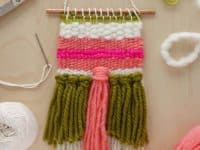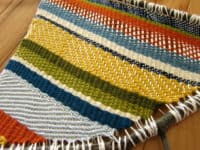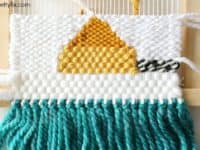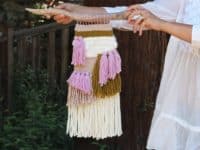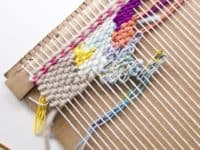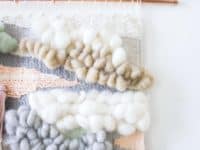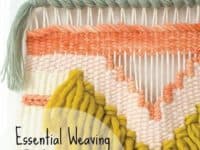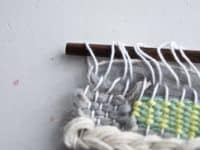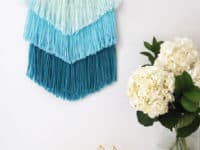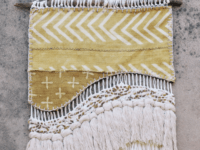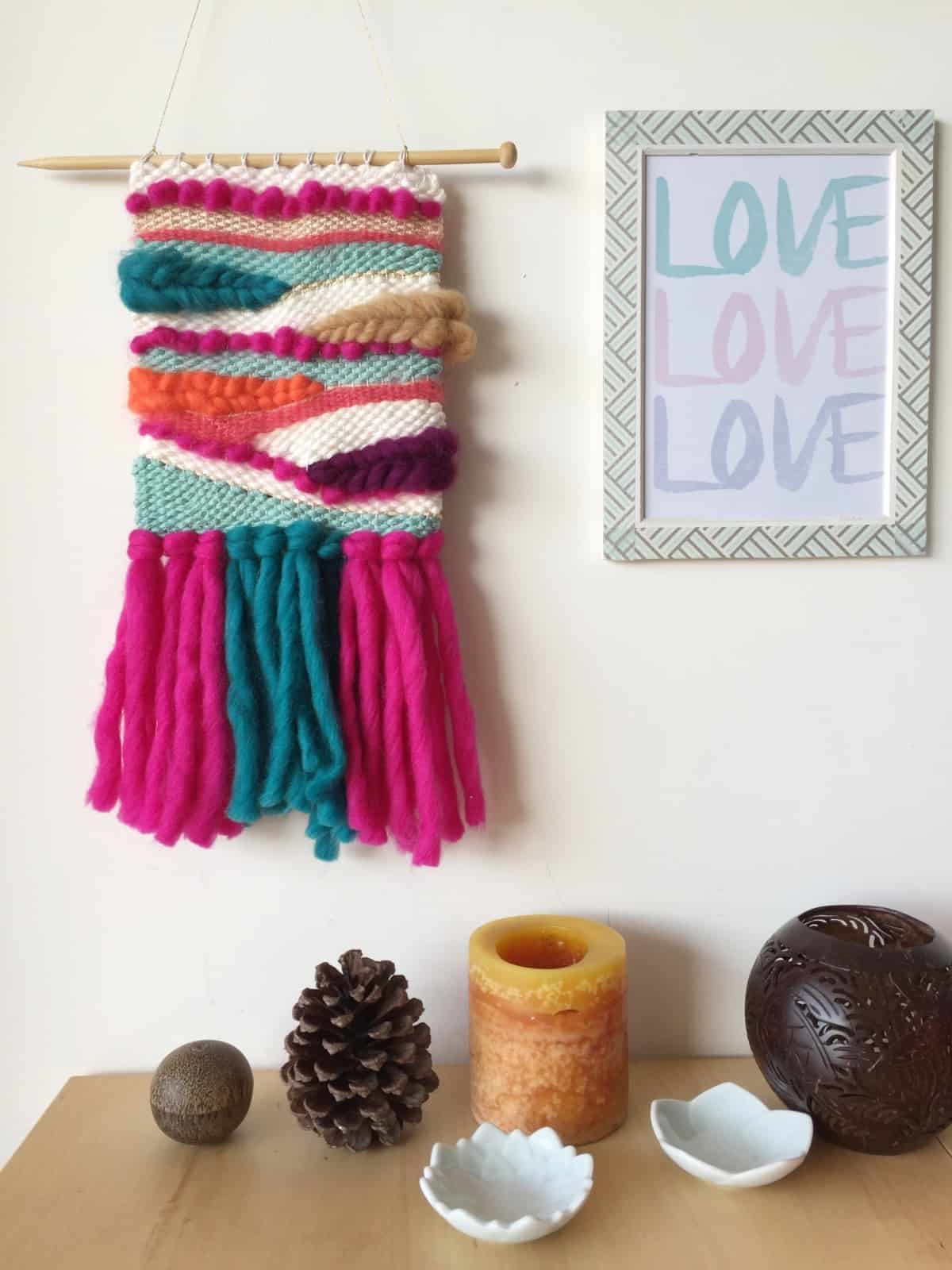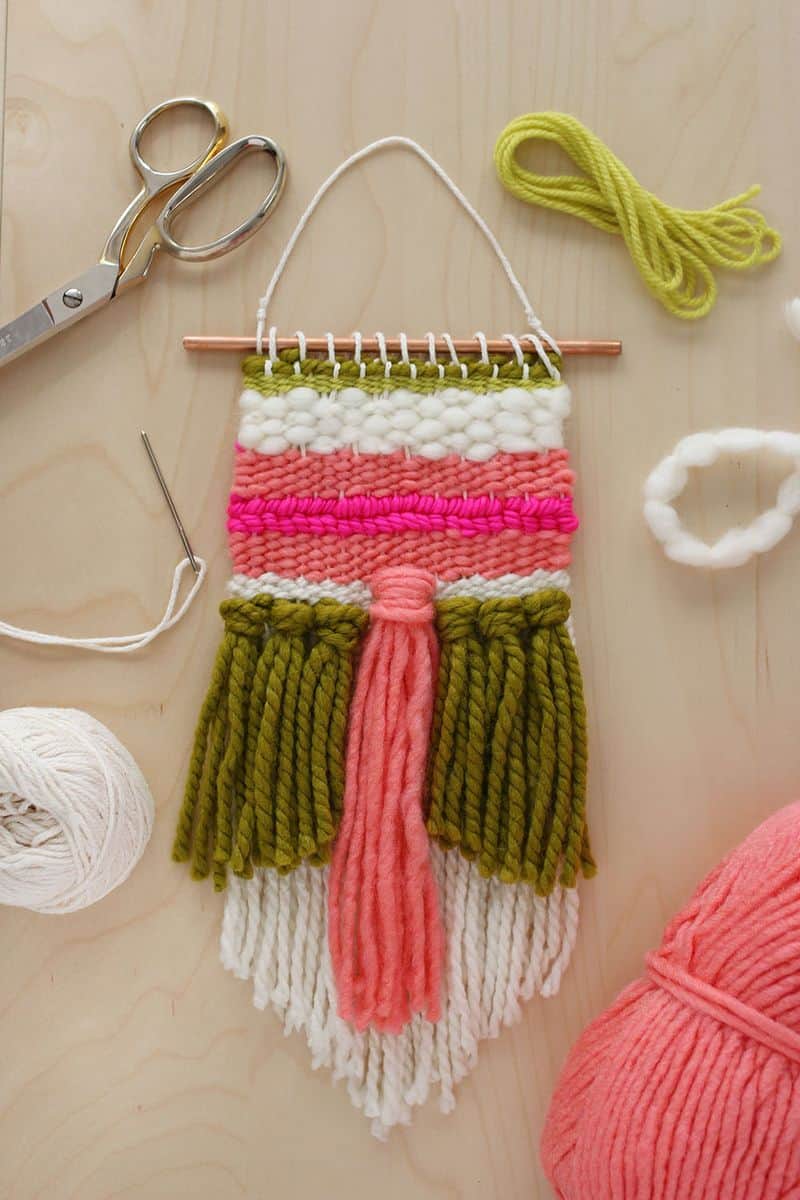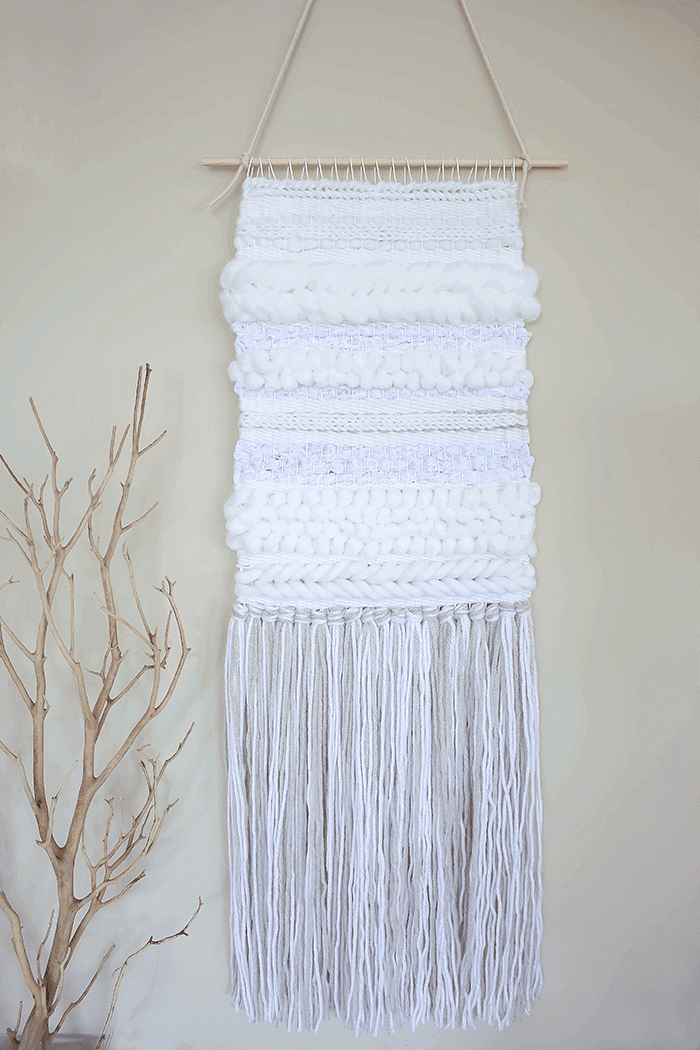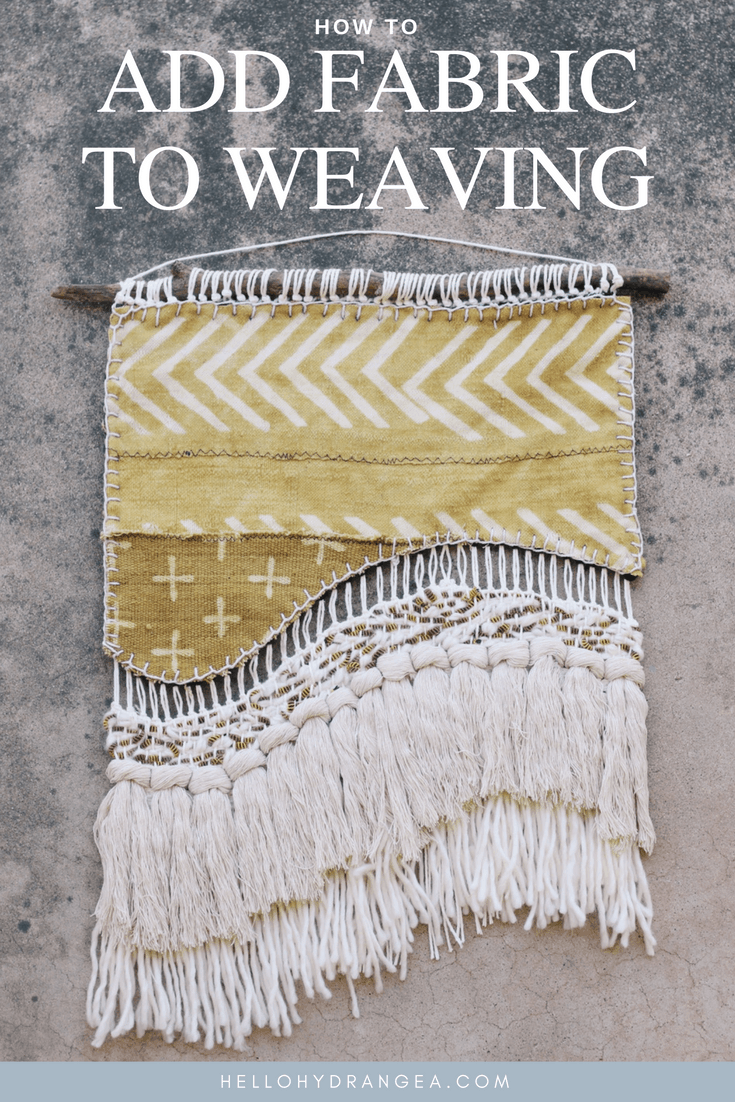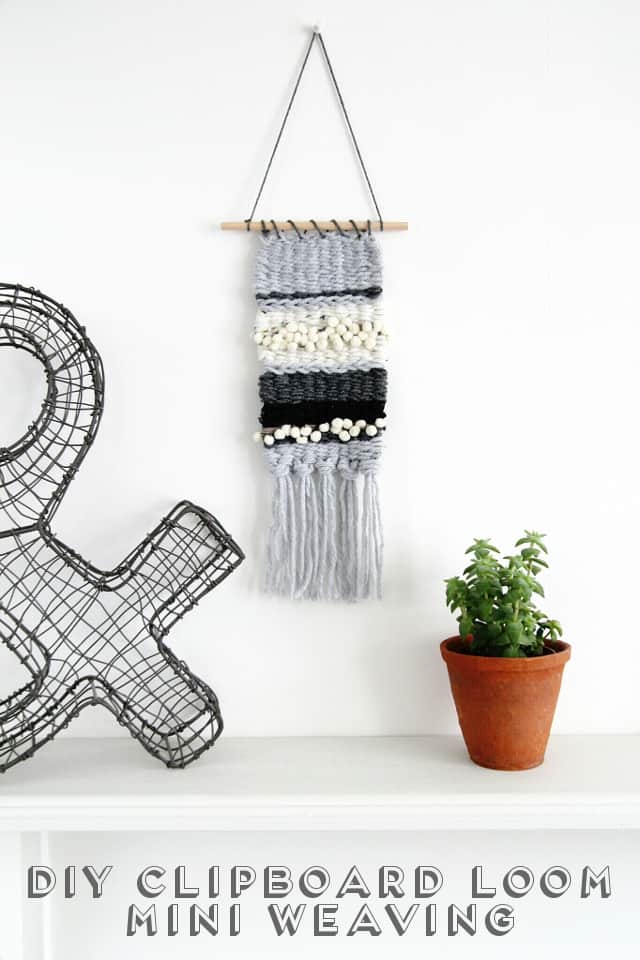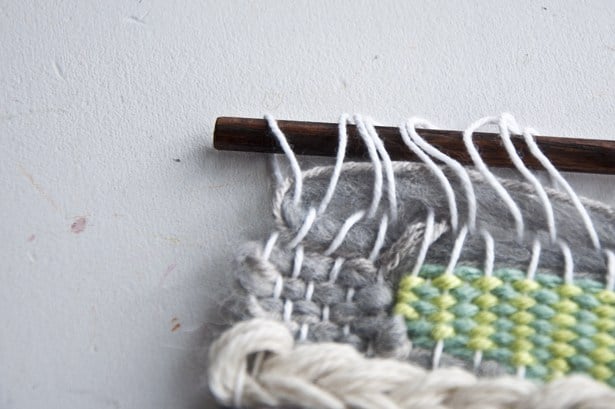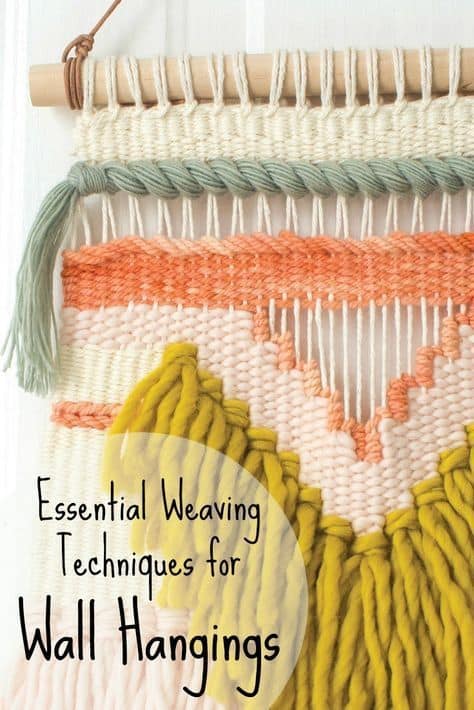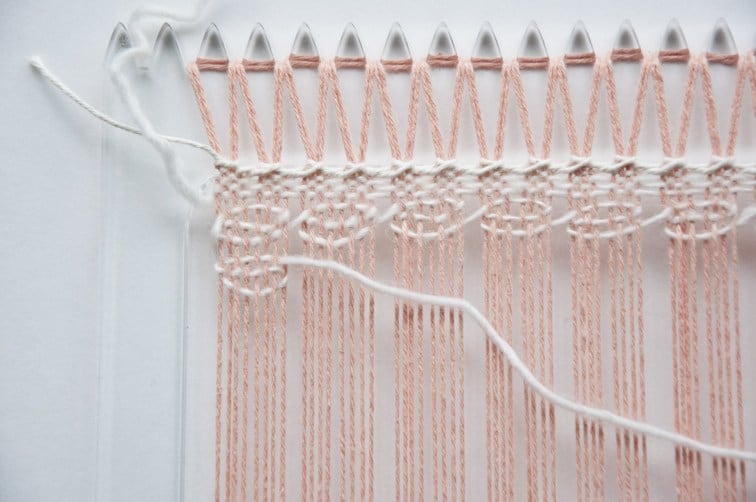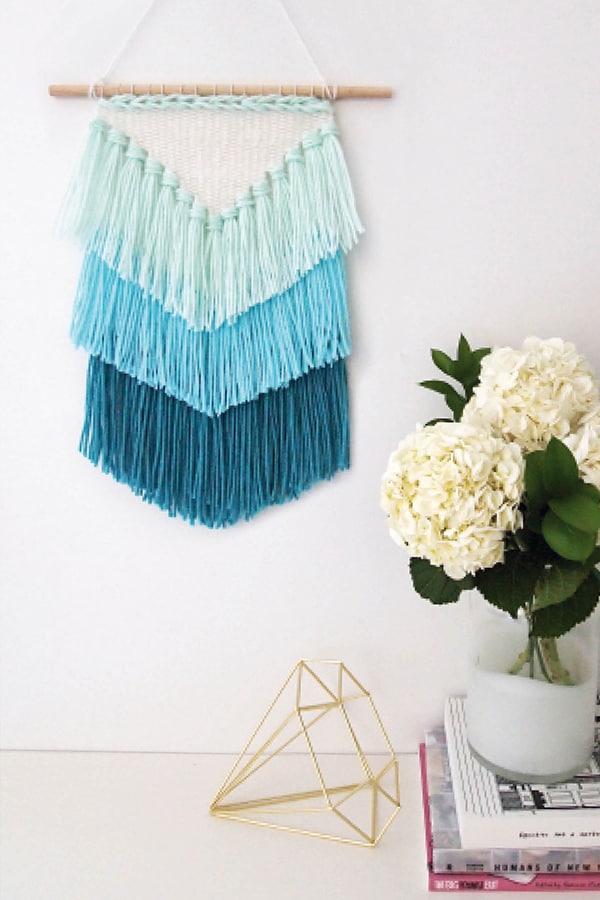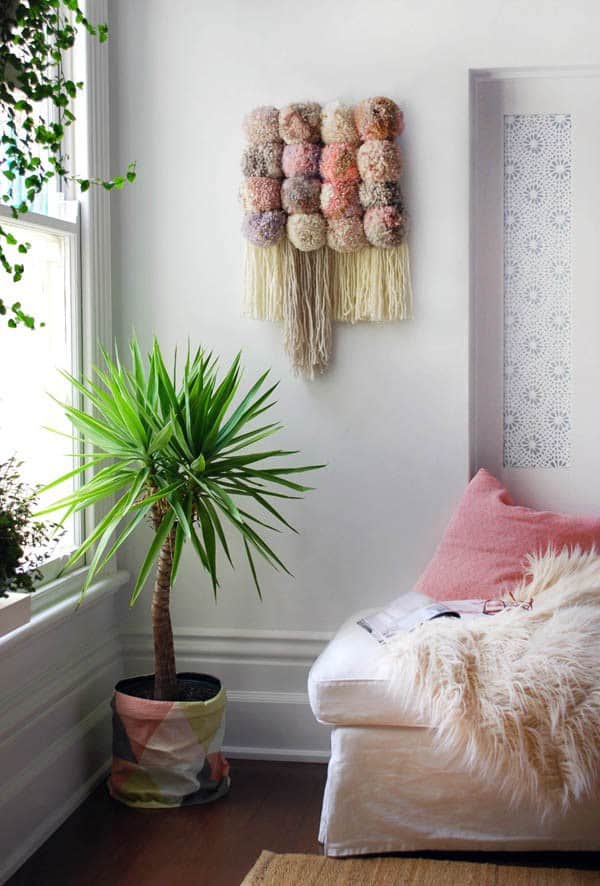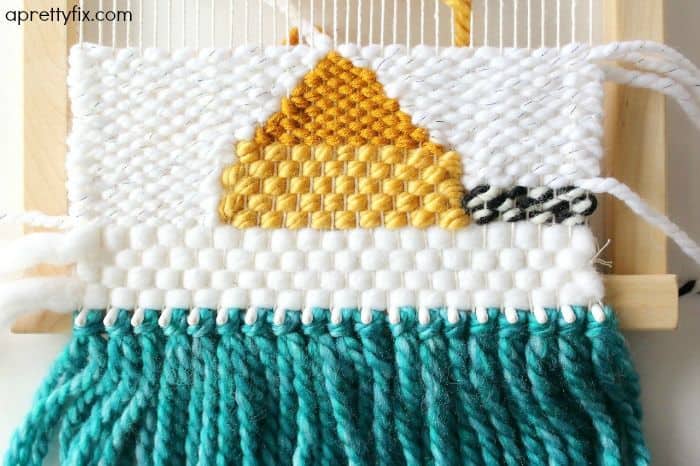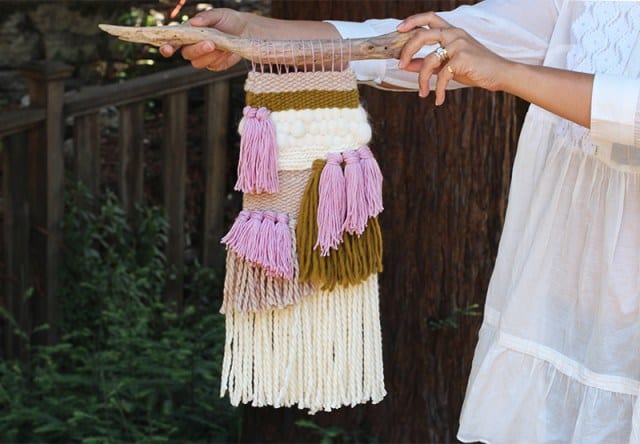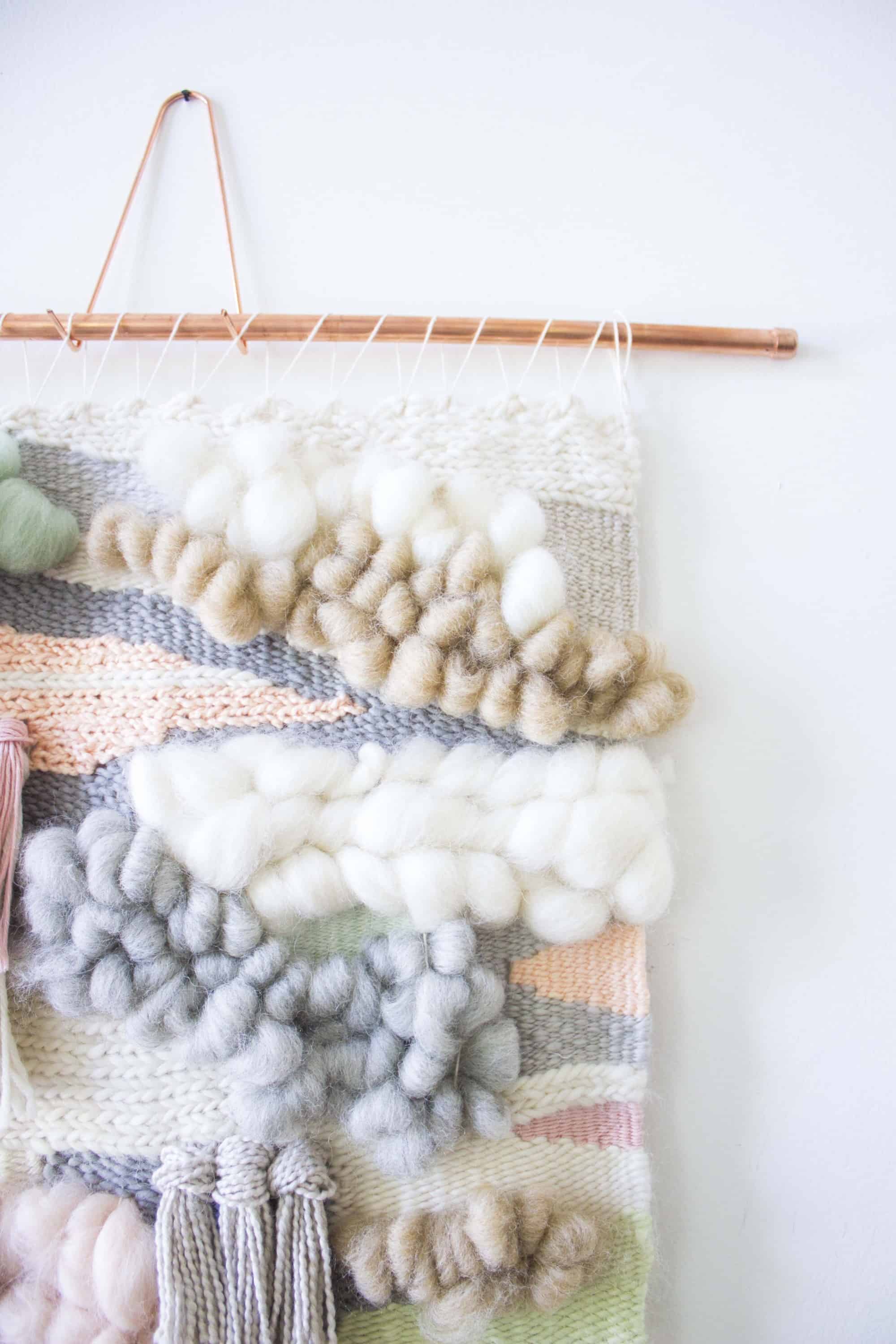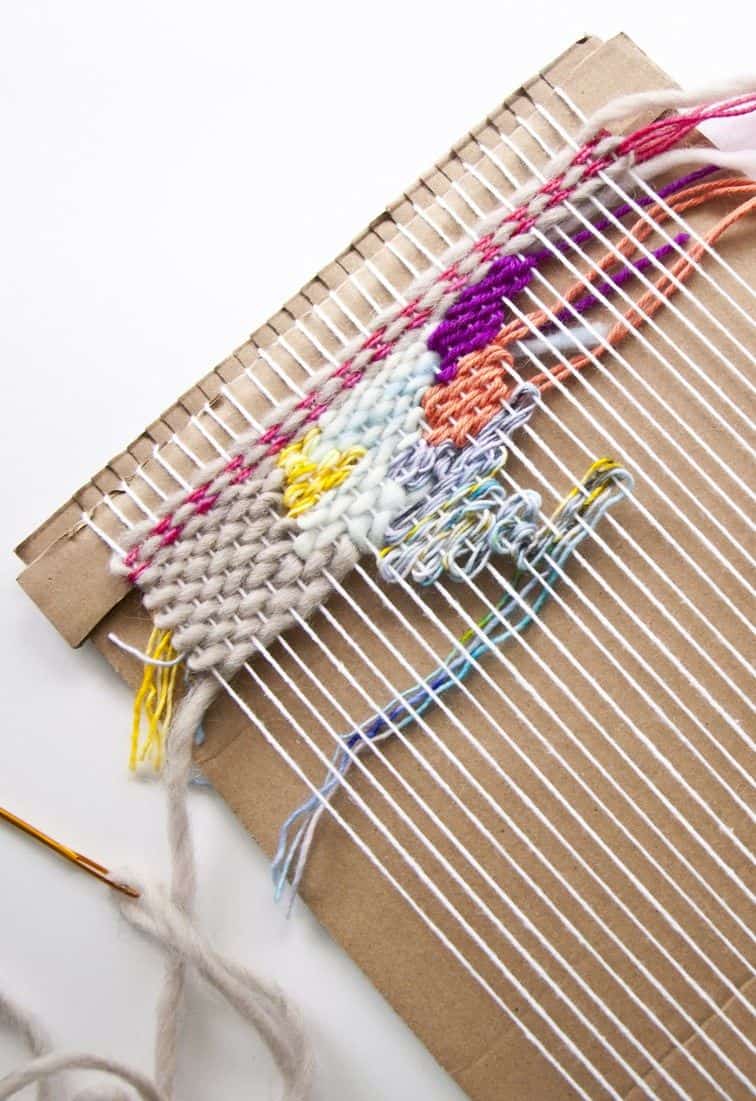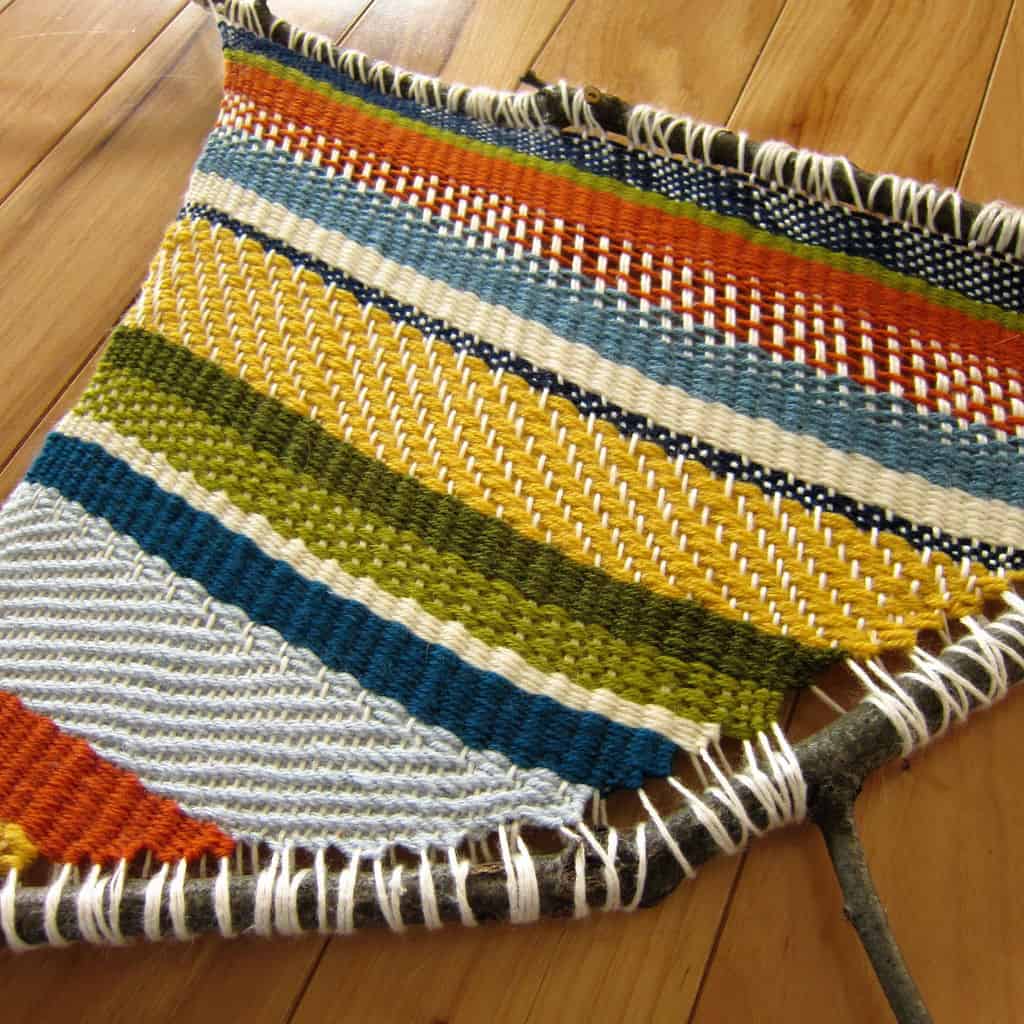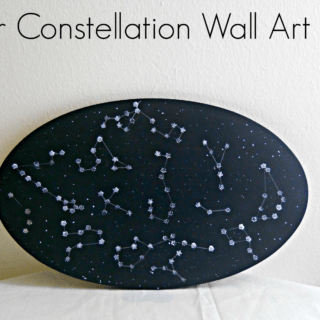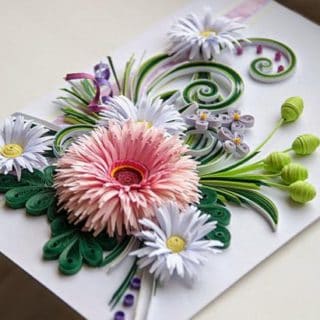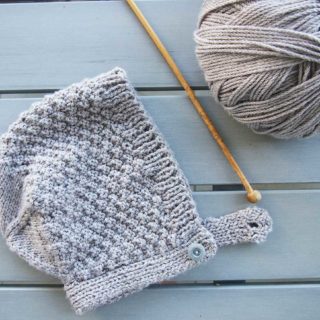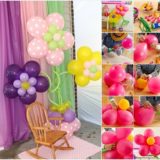We’re experienced yarn crafters, but sometimes it’s nice to do something besides knit and crochet. We’ll never get tired of the fibre arts but that doesn’t mean we can’t have fun changing things up a bit! Lately, we’ve been intent on improving our weaving skills by making things like beautiful woven all hangings containing all kinds of varying techniques.
Just in case you love weaving as much as we do, if not more, and you could also use some guidance in order to create simple weaving projects, here are 15 of the loveliest ideas we’ve found so far in our search for inspiration!
1. DIY waves and Soumak woven wall art
this tutorial teaches you hot to create colourful waves within your woven pattern be using yarn of various thicknesses and weights! Thinner yarn creates smaller knots while thick yarn or roving fills more space, causing ebbs and flows in the colours and textures you choose to work with. See more about this on Petit Bou de Chou.
2. Basic multi-textured weaving
Would you rather keep things a little more uniformed but practice your weaving tension and see what kinds of textures go well together visually? Then check out how A Beautiful Mess walks you through precisely those things while also teaching you several useful tips and tricks for making fringe.
3. Texture practice weaving
There are all different kinds of knots, weaves, and visual textures you can create within woven wall hangings, even when you’re trying to keep things simple! We love the way A Pretty Fix lets those various techniques stand out for their shape in this project by using different types of yarn woven in different ways but sticking to the same colour all throughout.
4. Adding fabric to weaving
Are you actually decently experienced in basic weaving techniques and now you’d like to combined soft material crafts and try something new? In that case, we’d definitely suggest taking a look at how Hello Hydrangea used weaving and simple hand stitching to create a pretty, unique hanging that uses yarn, thread, and fabric scraps all together in one project.
5. Miniature weaving with a clipboard loom
Part of what we love about weaving is that there are so many different ways to do it even before you start considering what kinds of technique you’ll use. If you’re interested in learning more, try this lovely miniature wall hanging created on a DIY loom made from a clipboard! Details for both the hanging and the loom are on Gathering Beauty.
6. How to fix 7 common issues in weaving
Perhaps you’re actually searching for weaving tutorials because you’ve learned the basic techniques and now you’re trying to practice methods of fixing your mistakes a little better, so you don’t have to pull your work out when something doesn’t full go according to plan? In that case, we think you’ll find this fantastic resource from The Weaving Loom very helpful indeed.
7. Knotting and weaving with roving
When you’re first learning about weaving, working with thick, single ply yarn or roving can feel very different indeed than working with tightly plied wool or yarn. That’s why we were so pleased to come upon this guide from Interweave that explains and prepares you for the differences.
8. A guide to lap looms for very beginners
Have you actually never tried weaving before, particularly on a small lap loom, and you’re looking for as much helpful material to read through as possible to prepare you before you get down to business? Then we think you simply must take a look at how The Weaving Loom outlines some of the first things you should try and how you set yourself up properly on the loom!
9. Adding tassels to woven pieces
You’ve seen a few tutorials so far that have given you a very brief outlined of how tassels and be incorporated into weaving projects along with other techniques, but what if you’ve actually never made tassels before at all and you’d like help right from the very beginning of the process? Then we think this tassel specific tutorial from Mollie Makes might be right up your alley!
10. Jumbo pom pom and fringe wall weaving
We’ve talked a little bit about weaving projects that have some texture, but what if you’re looking for something much more unique than what you’ve seen so far? Then think perhaps you might be the perfect person to try your hand at this amazing fluffy pom pom style wall weaving outlined step by step on We Are Scout! We love the pom poms’ jumbo size.
11. Simple inset colour changing techniques
Just in case you’re feeling up for a small challenge and like you might be ready to try changing colours within your woven pattern, rather than just at the end of a row, here’s a great resource for you! A Pretty Fix teaches you how to work with inset colour changes more effectively.
12. Multi-levelled fringe and tassel weaving
Perhaps you’ve just learned how to make tassels in different sizes and now you’re looking for new ways to put those skills to good use in order to make more interesting woven projects? In that case, we’d definitely suggest taking a look at how Honestly WTF created a piece that has a multi-levelled tassel effect with a lot of personality.
13. Inset roving pulls in weaving
Have you always loved the look of roving that stands out a little from more tightly woven backgrounds in weaving projects made from differently sized yarns? Then we think you’ll also totally appreciate the way Bonnie Christine created even more contrast between the two by doing a bit of strategic pilling to make raised little loops in the roving that stand out even more!
14. How to make a cardboard loom
We’ve talked a whole lot so far about DIY weaving projects and patterns but did you know that actually making yourself a loom to weave on can be a DIY project from scratch too? And yes, we mean even more from scratch than you saw with the clipboard idea we showed you earlier! See how this fantastic cardboard loom was made in more detail on The Weaving Loom.
15. Traditional branch weaving
Did you know that there’s actually an old fashioned way to do weaving that doesn’t require a real loom, the way you might understand the tool, at all? Check out how Instructables created this fantastic traditional branch loom from an actual tree branch, as well as how they used it to create stunning woven patterns all the way across.
